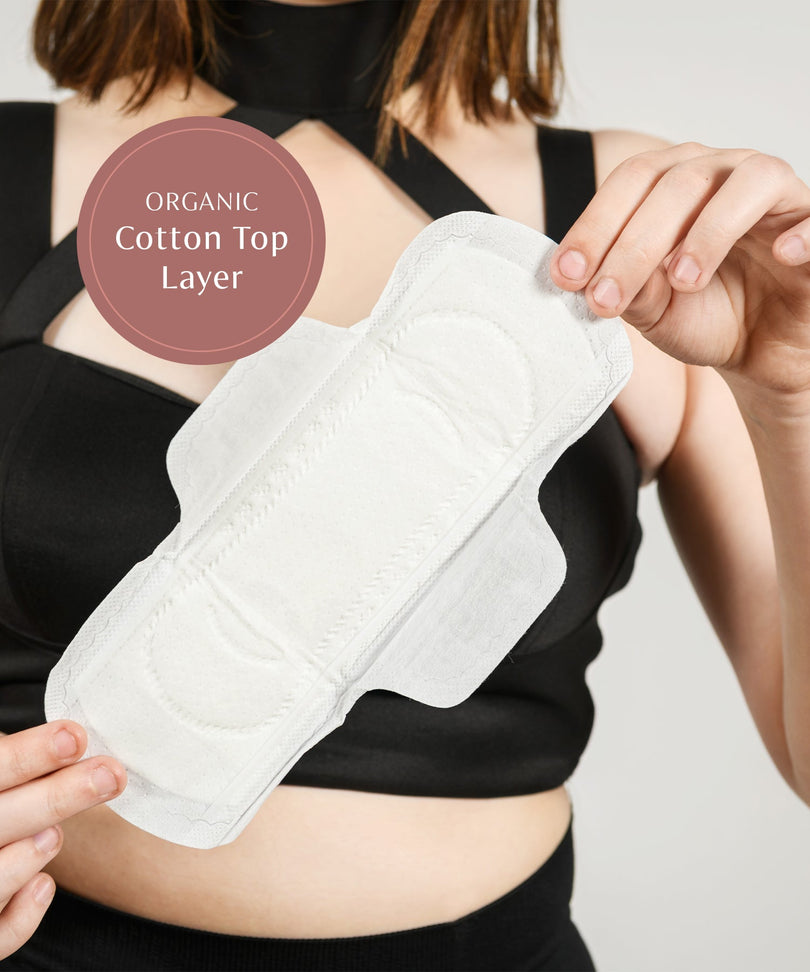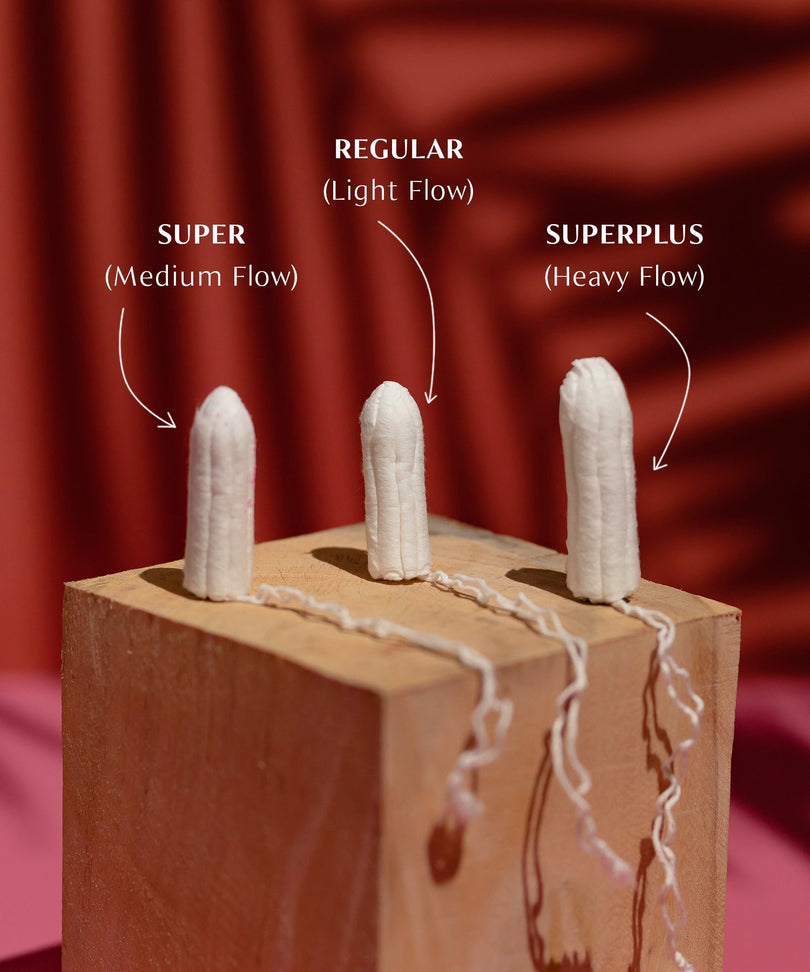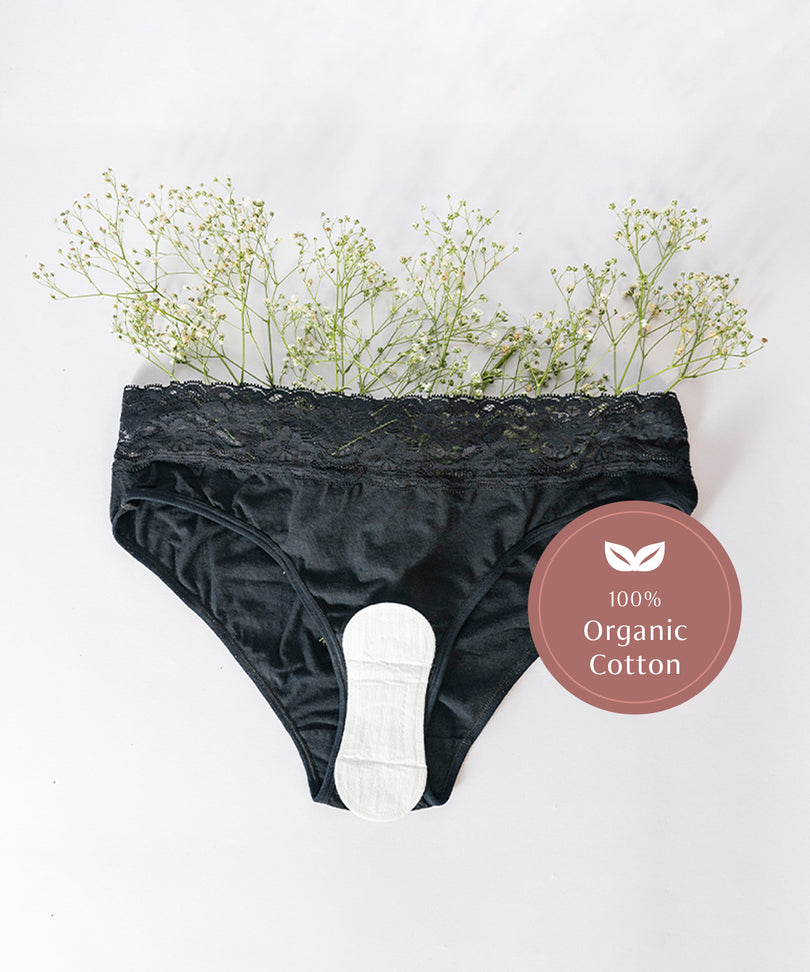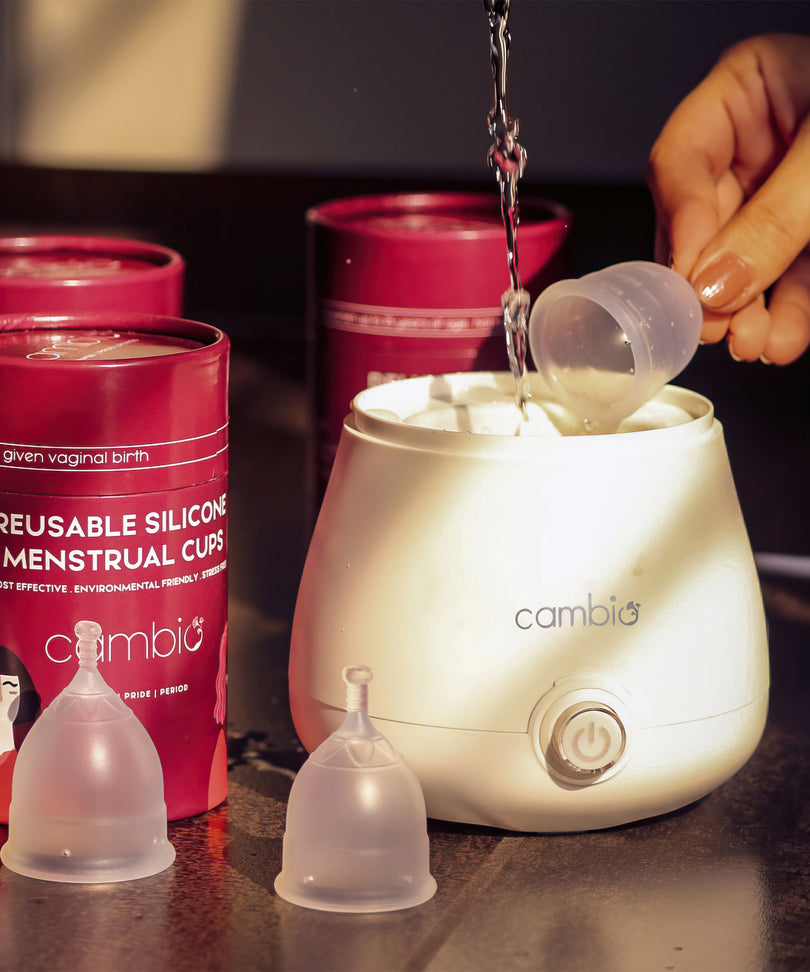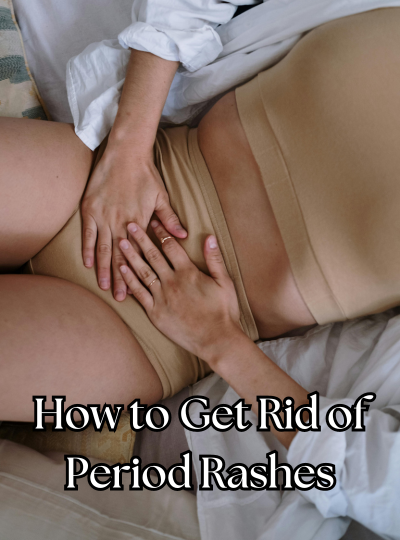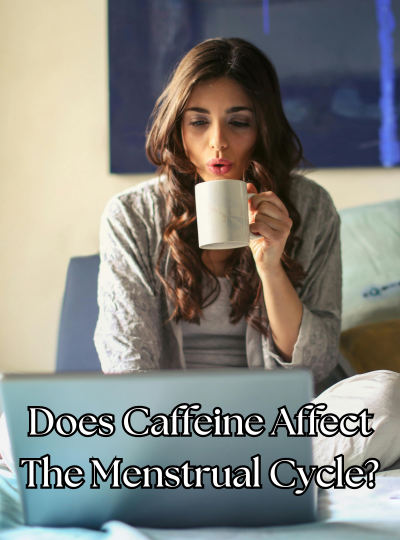What is a period rash?
Period rashes are skin irritations or inflammations that occur around the genital area that result in raw, red patches of skin that are irritated and tender to touch. Several reasons can explain the occurrence of these rashes:
- Prolonged exposure to menstrual products, such as pads or tampons leads to accumulation of blood and moisture that may lead to infections and rashes.
- Increased sensitivity around the genital region due to an increase in hormonal levels during the menstrual cycle (especially an increase in progesterone) is also a cause that may cause skin sensitivities.
- Period rashes can also occur due to components (material, chemicals, etc) in menstrual products that can trigger allergies upon immediate or prolonged touch.
- Opting for synthetic or non-organic underwear and pads can make your skin increasingly sensitive.
What does a period rash look like?
Sanitary pad rashes make the skin around the thighs, buttock region and outer vulva area tender and sensitive due to chafing and other factors. Typically, a period pad rash looks like raw, red or darkened patches of skin that are itchy, painful or both. In some cases, the skin around these regions starts peeling off.
Also read - Can sanitary pads cause yeast infections?
How do you get a period rash?
During menstruation, wearing sanitary napkins and exposure to moisture, friction, and heat can cause a rash to develop or worsen. Using sanitary napkins can also result in skin redness, swelling, or itchiness due to a reaction between the chemicals in the napkin and vaginal blood. Physical activities like walking or running while on your period can also contribute to the development of a period rash due to chafing.
Also read - Can sanitary pads cause cancer?
How to prevent period rash?
- Choose the Right Menstrual Products: Select menstrual products made from hypoallergenic materials, such as organic cotton pads or menstrual cups. Avoid products with added fragrances, dyes, or chemicals that may irritate sensitive skin.
- Practice Good Hygiene: Maintain proper hygiene during your period by changing pads or tampons regularly, especially during heavy flow days. Cleanse the genital area gently with mild, fragrance-free soap and water to remove sweat and bacteria that can contribute to rashes.
- Opt for Breathable Fabrics: Wear breathable cotton underwear and loose-fitting clothing to minimise friction and allow air circulation. Avoid tight-fitting garments or synthetic fabrics that can trap moisture and heat, leading to skin irritation.
- Keep the Area Dry: After bathing or showering, pat the genital area dry with a clean towel instead of rubbing, which can cause friction and exacerbate irritation. Avoid sitting in wet or sweaty clothing for prolonged periods to prevent moisture buildup.
- Use Barrier Creams or Powders: Apply a thin layer of barrier cream or powder, such as zinc oxide or cornstarch, to areas prone to rashes before wearing pads or underwear. These products create a protective barrier on the skin, reducing friction and moisture absorption.
- Consider Alternative Menstrual Products: Explore alternative menstrual products, such as period-proof underwear or reusable cloth pads, which may be gentler on the skin and less likely to irritate compared to disposable pads or tampons.
- Monitor and Address Allergic Reactions: Be mindful of any signs of allergic reactions, such as itching, redness, or swelling, after using menstrual products. If you suspect an allergy, switch to hypoallergenic alternatives and consult a healthcare professional for further evaluation and guidance.
Also read - Can pad cause irritation?
How to treat period rashes?
- Cool Compress: Apply a cool compress or ice pack wrapped in a cloth to the affected area for 10-15 minutes at a time. This can help reduce inflammation, soothe itching, and provide temporary relief from discomfort.
- Oatmeal Bath: Add colloidal oatmeal to a warm bath and soak for 15-20 minutes. Oatmeal has anti-inflammatory properties that can help calm irritated skin and relieve itching associated with period rashes.
- Topical Antihistamines: Over-the-counter topical antihistamine creams or lotions can help reduce itching and inflammation caused by allergic reactions. Apply a thin layer to the affected area as directed by the product label.
- Hydrocortisone Cream: Hydrocortisone cream is a mild steroid cream that can help reduce inflammation and itching associated with rashes. Apply a thin layer to the affected area up to three times a day, following the instructions on the product label.
- Calamine Lotion: Calamine lotion has soothing and drying properties that can help relieve itching and discomfort from period rashes. Apply a thin layer to the affected area and allow it to dry before covering it with clothing.
- Avoid Irritants: Avoid using scented products like scented sanitary pads, harsh soaps, or synthetic fabrics that can further irritate the skin. Stick to gentle, fragrance-free products and breathable cotton underwear to minimize irritation.
- Stay Hydrated: Drink plenty of water to stay hydrated, which can help promote overall skin health and healing. Avoid caffeine and alcohol specially during periods, which can dehydrate the body and exacerbate skin irritation.
- Seek Medical Advice: If the rash persists or worsens despite home treatment, or if you experience severe symptoms such as pain, swelling, or signs of infection, seek medical advice from a healthcare professional. They can provide further evaluation and recommend appropriate treatment options.
What to do if period rashes persist?
If your period rashes persist after every cycle despite following these steps, we recommend consulting your gynaecologist. Your rashes may be caused by a vaginal yeast infection, herpes or autoimmune progesterone dermatitis. They may prescribe a topical cream or antifungal medication depending on the condition.
Why do I have a rash after my period?
Symptoms of a pad rash can also appear just after your period as this is when it has had the most contact with pads and may have rubbed significantly.
However, if you think your rashes are not related to your choice of period products, a rash after menstruation could be a possible symptom of multiple conditions. If your pH levels were disrupted during your cycle, it may cause bacterial vaginosis. Vaginal itching is also a common symptom of multiple STIs like trichomoniasis.
If along with your rashes, you’re experiencing pain during urination or sex, unusual vaginal discharge, or sores on your genital area, we recommend visiting your gynaecologist.
Read more
Why does my vagina burn on my period?

